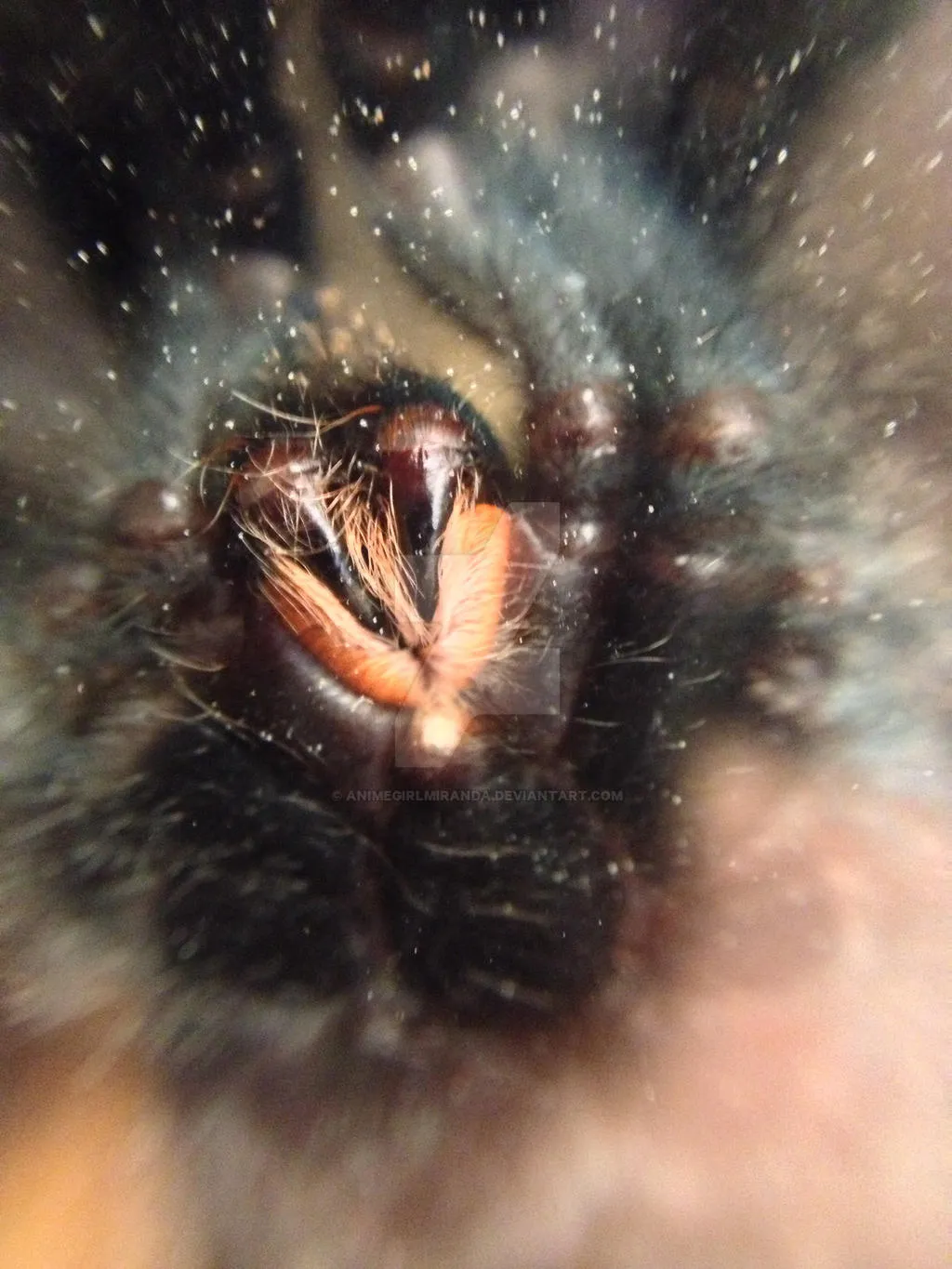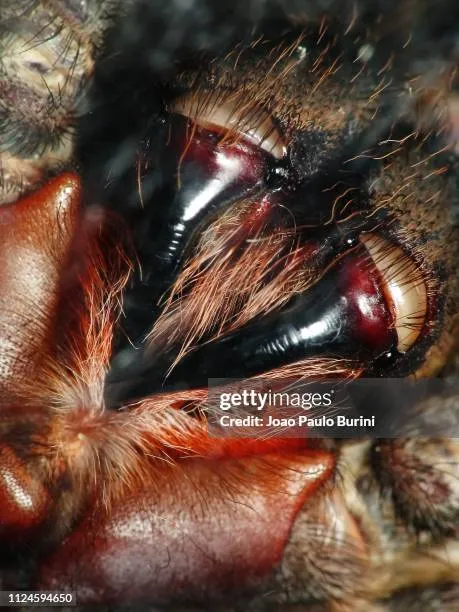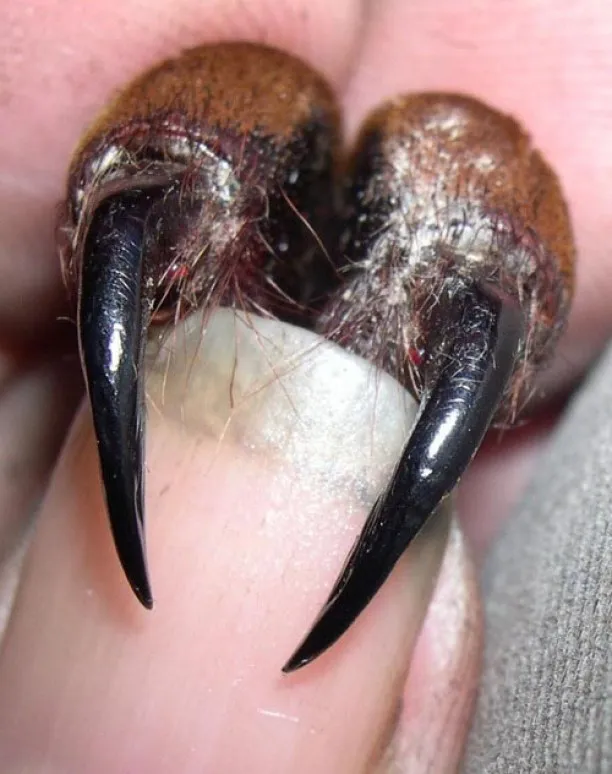How Many Fangs Do Tarantulas Have
Tarantulas, those fascinating and often misunderstood arachnids, are known for their impressive size, hairy bodies, and, of course, their fangs. But how many fangs does a tarantula actually possess? The answer is quite straightforward: a tarantula has two fangs. These fangs are not merely decorative; they are essential tools for survival, used for everything from capturing prey to defending against potential threats. Understanding the structure, function, and care of these fangs is crucial for anyone interested in these amazing creatures, whether you’re a seasoned tarantula keeper or simply curious about the natural world. This guide will delve into every aspect of tarantula fangs, providing a comprehensive understanding of their role in the life of a tarantula.
The Anatomy of a Tarantula Fang
The fangs of a tarantula are more than just sharp points; they are complex structures designed for both injecting venom and grasping prey. Each fang is essentially a modified chelicera, a mouthpart that extends from the front of the spider’s face. The fang itself is a sharp, hardened structure, often curved, that is connected to a venom gland located within the chelicerae. The outer layer of the fang is composed of chitin, a tough, durable material similar to what forms the exoskeleton of the tarantula. The shape and size of the fangs can vary slightly depending on the species of tarantula, but the basic design remains consistent. The tip of the fang has a small opening through which venom is injected, allowing the tarantula to quickly incapacitate its prey. Understanding this intricate structure gives a better appreciation for the adaptations that have allowed tarantulas to thrive for millions of years.
Structure and Composition of Tarantula Fangs

The fangs’ structure is highly specialized for their dual role of penetrating prey and delivering venom. The fangs are primarily composed of chitin, the same material that forms the spider’s exoskeleton. Chitin provides the necessary strength and durability to withstand the forces involved in capturing and subduing prey. The fang’s design includes a sharp, pointed tip to easily pierce the exoskeleton or skin of the prey, and a channel or groove that carries venom from the venom gland to the point of entry. This precise design ensures efficient venom delivery and minimizes the chances of the prey escaping. The hardness and sharpness of the fangs are crucial for their effectiveness, making them a formidable weapon in the tarantula’s arsenal. The fangs’ composition also includes proteins that contribute to their overall strength and resilience, ensuring they can function reliably throughout the tarantula’s life.
The Function of Fangs in Tarantulas
Tarantula fangs serve two primary functions that are critical to their survival predation and defense. As predators, tarantulas rely heavily on their fangs to capture and subdue prey, injecting venom to paralyze or kill it. The fangs’ design and venom are perfectly adapted for this purpose, allowing the tarantula to efficiently hunt a variety of insects, small animals, and even other spiders. In addition to their role in predation, tarantula fangs also serve as a defense mechanism. When threatened, a tarantula may use its fangs to bite and inject venom into a perceived attacker, deterring predators and protecting itself. Understanding these dual functions highlights the importance of fangs in a tarantula’s survival and success in its environment. The tarantula has evolved with these features to maximize its survival chances.
Fang Usage for Predation
Predation is a primary function of tarantula fangs. When a tarantula detects prey, it swiftly moves in for the attack. The tarantula uses its fangs to grasp the prey and inject venom. The venom contains various enzymes and toxins that act quickly to immobilize or kill the prey. This includes chemicals that break down the prey’s tissues, making it easier for the tarantula to consume. The tarantula often uses its fangs to hold the prey securely while injecting venom. This efficient method of capturing prey is a testament to the evolution of these creatures. The size and shape of the fangs, along with the potency of the venom, are crucial factors determining the tarantula’s success in its hunting endeavors. The entire process is incredibly fast and effective, allowing the tarantula to secure its next meal.
Fang Usage for Defense

The second crucial function of tarantula fangs is defense. When threatened by a predator or during times of perceived danger, tarantulas use their fangs to defend themselves. The tarantula will rear up, exposing its fangs as a warning display. If the threat persists, the tarantula may bite, injecting venom to deter the attacker. Although tarantula venom is generally not lethal to humans, it can cause significant pain, swelling, and other localized symptoms. The bite is more of a defensive act rather than a hunting technique, designed to ward off potential threats. The fangs are a last resort, used when other defensive strategies, such as fleeing or flicking urticating hairs, are ineffective. The ability to bite is an essential part of their survival strategy, ensuring that they can protect themselves from harm in various situations.
The Number of Fangs in Tarantulas
As previously mentioned, a tarantula has two fangs. These fangs are located on the chelicerae, the two appendages at the front of the spider’s head. The presence of only two fangs is a key characteristic of tarantulas. This contrasts with some other spiders that may have different numbers or arrangements of fangs. The two fangs work in tandem, one on each side, to grasp and inject venom into prey or to defend against threats. The precise positioning and function of these two fangs are crucial for the tarantula’s success in hunting and survival. This fixed number of fangs is a constant feature across all tarantula species, making it a definitive trait of these arachnids. The two fangs represent a perfect balance between efficiency and effectiveness, allowing the tarantula to accomplish its vital functions.
Comparing Tarantula Fangs
While all tarantulas have two fangs, there are variations in fang size, shape, and venom potency among different species. For instance, some tarantulas have longer, more slender fangs that are adapted for grasping larger prey, while others have shorter, sturdier fangs better suited for capturing smaller insects. The venom itself varies in composition and potency, influencing how quickly the prey is subdued or how effective the defense mechanism is against a threat. These differences are adaptations to the specific environments and prey types of each species. Comparing the fangs of different tarantula species reveals the fascinating diversity within this group of arachnids, each exhibiting unique adaptations that ensure its survival and success within its ecological niche. The differences in fang characteristics reflect the diverse evolutionary paths taken by various tarantula lineages, each adapted to its specific environment.
Size and Shape Variations

The size and shape of tarantula fangs can vary considerably. Some species have fangs that are relatively long and curved, ideal for penetrating the tough exoskeletons of beetles and other hard-bodied insects. Others may have shorter, straighter fangs more suited for handling smaller, more agile prey. The shape of the fangs can also vary, with some being more pointed for efficient penetration and others being broader for grasping. The size and shape of the fangs often correlate with the size and type of prey that a particular tarantula species typically consumes. The variations in fang morphology are a testament to the adaptability of tarantulas to different environments and food sources. These small differences in fang structure play a vital role in the success of these spiders as predators.
Molting and Fang Replacement
Tarantulas, like all arthropods, must molt their exoskeleton to grow. This process also involves the replacement of their fangs. The molting process ensures that the tarantula can shed its old, worn-out exoskeleton and grow a new, larger one. During molting, the fangs are also replaced. The new fangs are already formed inside the old ones, ready to take over once the old exoskeleton is shed. This process is a critical part of the tarantula’s life cycle, allowing it to grow and maintain healthy, functional fangs. Molting is essential not only for growth but also for the renewal of crucial structures like fangs, ensuring the tarantula’s continued ability to hunt and defend itself.
The Molting Process
Molting is a complex process that involves the tarantula shedding its exoskeleton. The tarantula prepares for molting by stopping feeding and finding a safe place to hide. It then begins to secrete enzymes that separate the old exoskeleton from the new one forming beneath. During molting, the tarantula swells with fluids, which causes the old exoskeleton to split open. The tarantula then wriggles free of its old exoskeleton, revealing a new, soft, and vulnerable body. The entire process can take several hours, and during this time, the tarantula is extremely vulnerable to predators. The molting process is a vulnerable but necessary stage, allowing the tarantula to grow and renew its essential structures, including its fangs. After molting, the tarantula’s new exoskeleton gradually hardens, and the tarantula regains its strength and ability to hunt and defend itself.
Fang Regeneration

During the molting process, not only does the tarantula shed its old fangs, but it also regenerates new ones. The new fangs are pre-formed inside the old ones, ready to take over once the old exoskeleton is shed. This ensures that the tarantula always has functional fangs for hunting and defense. The replacement process is seamless, with the new fangs immediately ready for use. The ability to regenerate fangs is a crucial adaptation, ensuring that tarantulas maintain their ability to survive and thrive. This renewal process underscores the efficiency and adaptability of tarantulas to environmental challenges. Fang regeneration is an impressive example of nature’s ability to equip creatures with essential tools for survival.
Maintaining Tarantula Fang Health
Proper care and maintenance are crucial for ensuring a tarantula’s fangs remain healthy and functional. This includes providing a clean and appropriate habitat, ensuring proper nutrition, and avoiding situations that could lead to fang damage. A healthy tarantula with well-cared-for fangs is better equipped to thrive and live a long life. Tarantula keepers should pay close attention to the condition of the fangs during routine health checks. Observing any changes in the fangs, such as damage or discoloration, can help prevent serious issues from developing. The overall health of a tarantula is linked with the condition of its fangs. Careful attention to these details is essential for responsible tarantula ownership and care.
Preventing Fang Damage
Preventing fang damage involves several strategies aimed at providing a safe and suitable environment for the tarantula. The enclosure should be free of sharp objects, such as rough rocks or improperly secured decorations, which could cause the tarantula to injure its fangs. Handling should be kept to a minimum, as this increases the risk of accidental damage. Providing the tarantula with an appropriate substrate for burrowing or climbing can reduce the likelihood of the tarantula’s fangs being chipped or broken. Proper feeding practices are also important. Avoid feeding the tarantula prey items that are too large or that could cause the tarantula to struggle or injure itself. Preventing fang damage is a key aspect of responsible tarantula keeping, helping to ensure the animal’s well-being and safety.
Identifying Fang Issues

Regularly inspecting the fangs for any signs of damage is crucial for maintaining the health of a tarantula. Look for any chips, cracks, or unusual discoloration. Discoloration, for example, may indicate an infection or other health issue that requires attention. A damaged fang may affect the tarantula’s ability to eat or defend itself. If you notice any issues, it is important to consult with an experienced tarantula keeper or a veterinarian with expertise in arachnids. Early detection and intervention can prevent the problem from worsening and ensure that the tarantula remains healthy. Regularly examining the tarantula’s fangs and body, therefore, plays an essential role in overall tarantula care, allowing for a healthy and thriving pet.
Conclusion
In conclusion, the tarantula’s two fangs are essential tools for their survival, used for predation and defense. These specialized appendages, with their unique structure and function, allow tarantulas to thrive in a variety of environments. Understanding the anatomy, function, and care of tarantula fangs is crucial for those interested in these amazing creatures. From their role in capturing prey to their importance in defense, tarantula fangs are a testament to the power of natural selection. By appreciating the details of these formidable fangs, we gain a deeper understanding and respect for the fascinating world of tarantulas.
